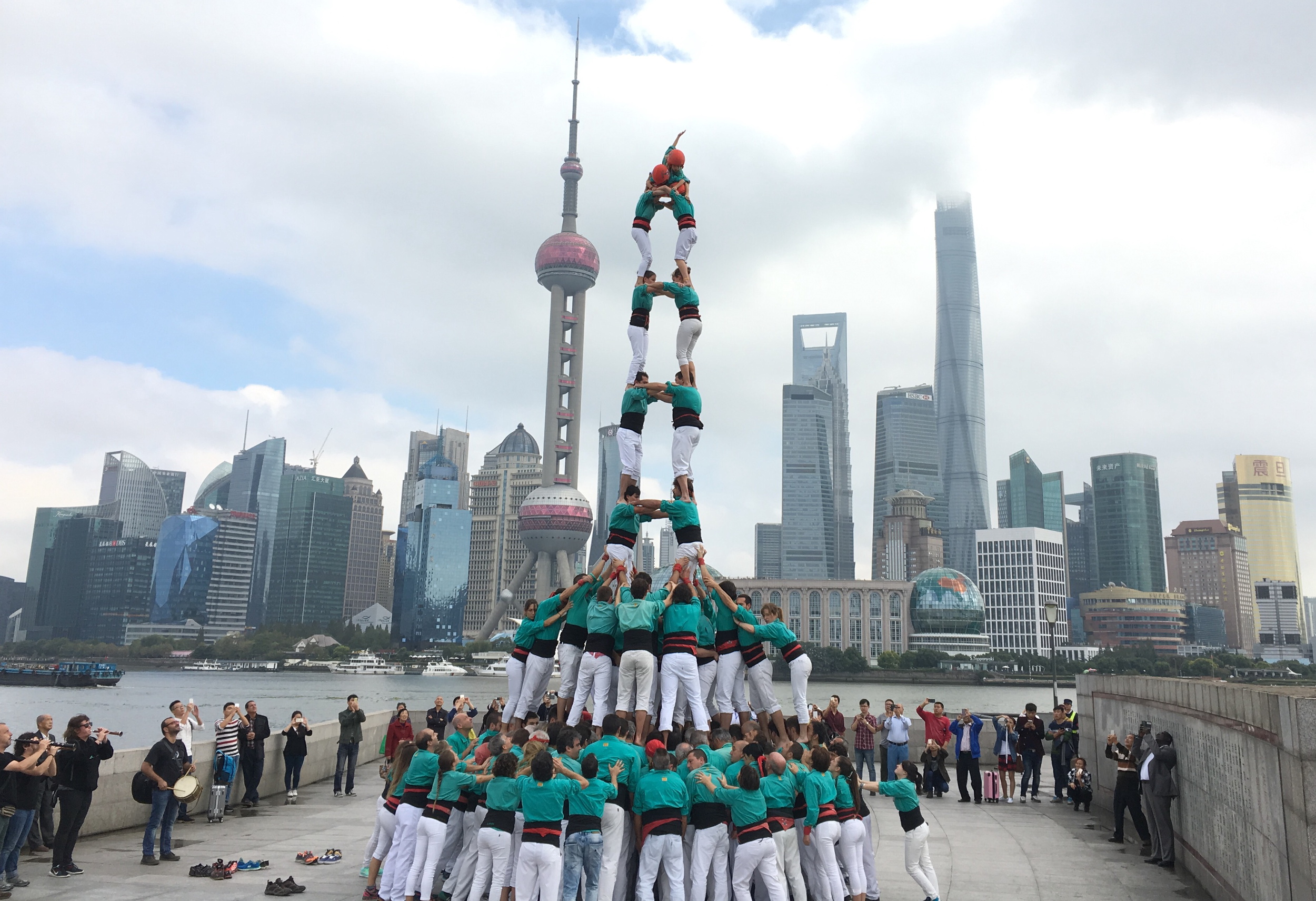The Castells Competition is back, and it’s more international than ever
More than 120 media outlets will cover the 26th edition of the Castells Competition, taking place this weekend at the Tàrraco Arena Place, an old bullring located in Tarragona, southern Catalonia. This year’s edition will become an international window for Catalan culture as 380 journalists from China, Australia, United Kingdom, America and all around the globe have been accredited and will witness the event. 32 human tower groups (‘colles’) will perform, one of them from China: the Children of Hangzhou. Tarragona’s Mayor, Josep Fèlix Ballesteros, stated that this international media presence proves that the impact of castells “goes beyond our territory and is global”. More than 25,000 people will attend the competition this weekend, in an edition that is expected to be the most international and historic one, due to the high level of the human tower groups.

Barcelona (CNA).- The countdown has begun to the 26th Castells Competition, the most international edition yet. The Tàrraco Arena Place, an old bullring in Tarragona, southern Catalonia, will receive 32 human tower groups this weekend, including one from China: the Children of Hangzhou. A dozen human tower groups will perform on Saturday afternoon, while the top 12 will do so on Sunday. Tickets for the last day were sold out within minutes of going on sale in July. Nearly 380 professionals from 120 different media outlets have been accredited to cover the biennial competition that is believed this year will be historic due to the peak that the ‘casteller’ phenomenon is enjoying and the high level of the groups. The international coverage “is a sample of the impact that castells have not only in our territory, but in all the world”, stated Tarragona’s Mayor, Josep Fèlix Ballesteros.
The current castells season has already been historic, with impressive castles of ‘3’ and ‘4’ of 10 levels achieved by the ‘Colla Vella de Valls’ and the ‘Xiquets de Vilafranca’, which suggests that the competition will be historic too. The latter group won the 2014 contest without much difficulty, but this time the competition will be tighter. In fact, this year the event has been accompanied by a campaign to promote respectful rivalry between the participants. A giant screen to allow viewers to follow the contest will be set up outside Tàrraco Arena Place. "Maybe it will be the best competition ever" predicted the president of the Coordination of Castellers Groups in Catalonia, Jordi Grau.
"It will be the most spectacular and the most international edition yet, due to the groups, the attendees and the coverage it will have”, Ballesteros stated. The competition will count on the participation of the Children of Hangzhou, a Chinese group that arrived on Tuesday to Catalonia. This ‘colla’ was born in 2010 around the textile company Antex and have ever since received the support of ‘la Colla Vella dels Xiquets de Valls’.
The members of the group were received by the Catalan Minister of Foreign Affairs, Institutional Relations and Transparency, Raül Romeva, the Catalan Minister of Culture, Santi Vila, and the General Consul of China in Barcelona, Hang Teng. In an event behind the Cathedral of Barcelona, the Chinse group rose three human towers: one ‘2’ of ‘7’ levels, a ‘3’ of ‘7’ and a pillar of ‘5’. Afterwards, the Children of Huangzhou moved to the local of the ‘Castellers of Barcelona’, a group with whom it has an agreement, and trained together.
Romeva said during the performance that the value of human towers lies not only in the ability to reach "higher and higher" structures, but above all in the ability to "add from very different origins, conditions and capacities”.
For his part, Santi Vila highlighted the own "dialect" of the human tower world: it is about "wise and ambition, individual talent and teamwork", the politician stated. From his view this speaks of a collaborative work that "must always be open to people from everywhere". Vila thanked the visit of the Children of Huangzhou and especially its contribution to spread "a tradition from our territory”.
A competition with €400,000 budget
A picture of a pile of river stones arranged from the largest to the smallest promotes this year’s edition. The event has a budget of €400,000, with the City Council contributing €300,000 and the rest coming from sponsorship. "The expense turns into an investment in the cultural industry", said Ballesteros.
While the precise economic impact on the city remains unknown, the mayor said it will be "huge", not only for the people attending the event, up to 25,000 throughout the weekend, but also for the parallel activities. They range from a human tower exhibition on Font Square with four international groups - from Copenhagen, Paris, London and Andorra, to the stalls that will be set up outside the old bullring, with fifteen exhibitors.